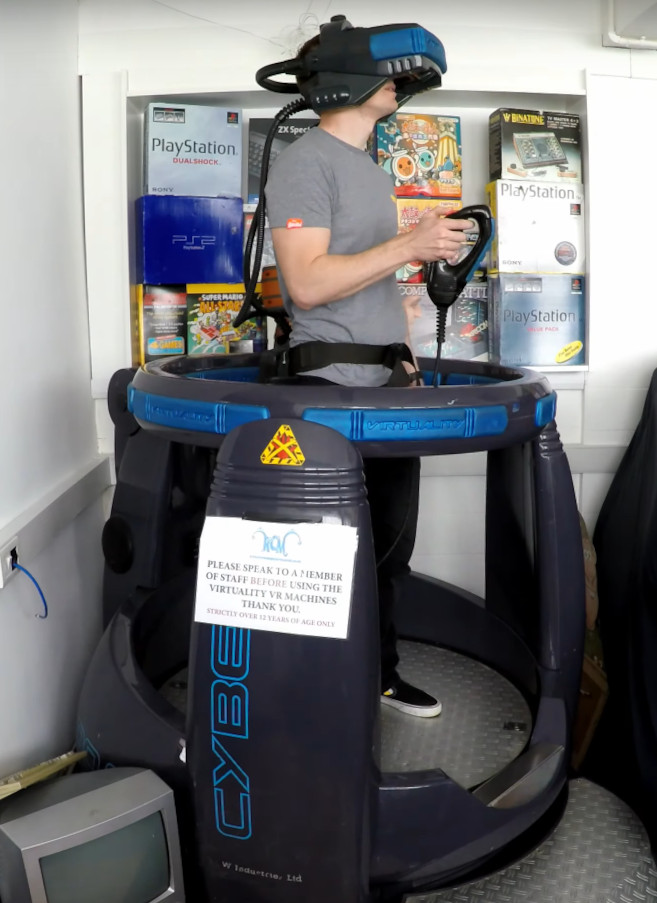|
Telerehabilitation
Telerehabilitation (or e-rehabilitation is the delivery of rehabilitation services over telecommunication networks and the internet. Telerehabilitation allows patients to interact with providers remotely and can be used both to assess patients and to deliver therapy. Fields of medicine that utilize telerehabilitation include: physical therapy, occupational therapy, speech-language pathology, audiology, and psychology. Therapy sessions can be individual or community-based. Types of therapy available include motor training exercises, speech therapy, virtual reality, robotic therapy, goal setting, and group exercise. Commonly used modalities include webcams, videoconferencing, phone lines, videophones and webpages containing rich Internet applications. The visual nature of telerehabilitation technology limits the types of rehabilitation services that can be provided. Telerehabilitation is therefore often combined with other modalities such as in-person therapy. Important ar ... [...More Info...] [...Related Items...] OR: [Wikipedia] [Google] [Baidu] |
Virtual Reality In Telerehabilitation
Virtual reality in telerehabilitation is a method used first in the training of Human musculoskeletal system, musculoskeletal patients using wikt:asynchronous, asynchronous patient data uploading, and an internet video link. Subsequently, therapists using virtual reality-based telerehabilitation prescribe exercise routines via the web which are then accessed and executed by patients through a web browser. Therapists then monitor the patient's progress via the web and modify the therapy Asynchronous learning, asynchronously without real-time interaction or training. Background The computer technology that allows development 3D computer graphics, three-dimensional virtual reality, virtual environments consists of both computer hardware, hardware and software. The current popular, technical, and scientific interest in virtual environments is inspired, in large part, by the advent and availability of increasingly powerful and affordable visually oriented, interactive, graphical display ... [...More Info...] [...Related Items...] OR: [Wikipedia] [Google] [Baidu] |
Videoconferencing
Videotelephony (also known as videoconferencing or video calling) is the use of audio signal, audio and video for simultaneous two-way communication. Today, videotelephony is widespread. There are many terms to refer to videotelephony. ''Videophones'' are standalone devices for video calling (compare Telephone). In the present day, devices like smartphones and computers are capable of video calling, reducing the demand for separate videophones. ''Videoconferencing'' implies group communication.Mulbach et al, 1995. pg. 291. Videoconferencing is used in telepresence, whose goal is to create the illusion that remote participants are in the same room. The concept of videotelephony was conceived in the late 19th century, and versions were available to the public starting in the 1930s. Early demonstrations were installed at booths in post offices and shown at various world expositions. In 1970, AT&T launched the first commercial personal videotelephone system. In addition to videoph ... [...More Info...] [...Related Items...] OR: [Wikipedia] [Google] [Baidu] |
Physical Therapy
Physical therapy (PT), also known as physiotherapy, is a healthcare profession, as well as the care provided by physical therapists who promote, maintain, or restore health through patient education, physical intervention, disease prevention, and health promotion. Physical therapist is the term used for such professionals in the United States, and physiotherapist is the term used in many other countries. The career has many specialties including musculoskeletal, orthopedics, cardiopulmonary, neurology, endocrinology, sports medicine, geriatrics, pediatrics, women's health, wound care and electromyography. PTs practice in many settings, both public and private. In addition to clinical practice, other aspects of physical therapy practice include research, education, consultation, and health administration. Physical therapy is provided as a primary care treatment or alongside, or in conjunction with, other medical services. In some jurisdictions, such as the United Kin ... [...More Info...] [...Related Items...] OR: [Wikipedia] [Google] [Baidu] |
Videotelephony
Videotelephony (also known as videoconferencing or video calling) is the use of audio signal, audio and video for simultaneous two-way communication. Today, videotelephony is widespread. There are many terms to refer to videotelephony. ''Videophones'' are standalone devices for video calling (compare Telephone). In the present day, devices like smartphones and computers are capable of video calling, reducing the demand for separate videophones. ''Videoconferencing'' implies group communication.Mulbach et al, 1995. pg. 291. Videoconferencing is used in telepresence, whose goal is to create the illusion that remote participants are in the same room. The concept of videotelephony was conceived in the late 19th century, and versions were available to the public starting in the 1930s. Early demonstrations were installed at booths in post offices and shown at various world expositions. In 1970, AT&T launched the first commercial personal videotelephone system. In addition to videoph ... [...More Info...] [...Related Items...] OR: [Wikipedia] [Google] [Baidu] |
Pablo Jarrín 4
Pablo is a masculine given name, the Spanish form of the name Paul. People * Pablo Acha (born 1996), Spanish archer * Pablo Alarcón (born 1946), Argentine actor * Pablo Alborán (born 1989), Spanish singer * Pablo Aimar (born 1979), Argentine footballer * Pablo Armero (born 1986), Colombian footballer * Pablo Bartholomew (born 1955), Indian photojournalist * Pablo Berger (born 1963), Spanish film director and screenwriter * Pablo de Blasis (born 1988), Argentine footballer * Pablo Brandán (born 1983), Argentine footballer * Pablo Brenes (born 1982), Costa Rican footballer * Pablo Bueno (born 1990), Argentine footballer * Pablo Carreño Busta (born 1991), Spanish tennis player * Pablo Casals (1876–1973), Catalan cello virtuoso * Pablo Cavallero (born 1974), Argentine retired footballer * Pablo Couñago (born 1979), Spanish footballer * Pablo Cuevas (born 1986), Uruguayan tennis player * Pablo Virgilio David (born 1959), Filipino cardinal, current Bishop of Kalookan * Pablo ... [...More Info...] [...Related Items...] OR: [Wikipedia] [Google] [Baidu] |
Plain Old Telephone Service
Plain old telephone service (POTS), or publicly offered telephone service, is basic Voice band, voice-grade telephone service. Historically, POTS has been delivered by Analog signal, analog signal transmission over copper loops, but the term also describes Backward compatibility, backward-compatible analog connections offered by digital telephone systems. Copper loop POTS was the standard service offering from telephone companies in the United States from 1876 until 1988, when the Integrated Services Digital Network (ISDN) Basic Rate Interface (BRI) was introduced, followed by the development of mobile phone, cellular telephone systems and voice over internet protocol (VoIP). Despite the advent of these technologies, copper loop POTS remains a basic form of residential and small business connection to the telephone network in many parts of the world. The term encapsulates a technology that has been available since the introduction of the public telephone system in the late 19th c ... [...More Info...] [...Related Items...] OR: [Wikipedia] [Google] [Baidu] |
Analog Transmission
Analog transmission is a transmission method of conveying information using a continuous signal which varies in amplitude, phase, or some other property in proportion to that information. It could be the transfer of an analog signal, using an analog modulation method such as frequency modulation (FM) or amplitude modulation (AM), or no modulation at all. Some textbooks also consider passband data transmission using a digital modulation method such as ASK, PSK and QAM, i.e. a sinewave modulated by a digital bit-stream, as analog transmission and as an analog signal. Others define that as digital transmission and as a digital signal. Baseband data transmission using line codes, resulting in a pulse train, are always considered as digital transmission, although the source signal may be a digitized analog signal. Methods Analog transmission can be conveyed in many different fashions: * Optical fiber * Twisted pair or coaxial cable * Radio * Underwater acoustic communication The ... [...More Info...] [...Related Items...] OR: [Wikipedia] [Google] [Baidu] |
Telephone Line
A telephone line or telephone circuit (or just line or circuit industrywide) is a single-user circuit on a telephone communication system. It is designed to reproduce speech of a quality that is understandable. It is the physical wire or other signaling medium connecting the user's telephone apparatus to the telecommunications network, and usually also implies a single telephone number for billing purposes reserved for that user. Telephone lines are used to deliver consistent landline telephone service and digital subscriber line (DSL) phone cable service to the premises. Telephone overhead lines are connected to the public switched telephone network. The voltage at a subscriber's network interface is typically 48 V between the ring and tip wires, with tip near ground and ring at –48 V. In the United States In 1878, the Bell Telephone Company began using two-wire circuits, called the local loop, from each user's telephone to end offices, which performed a ... [...More Info...] [...Related Items...] OR: [Wikipedia] [Google] [Baidu] |
Telephone
A telephone, colloquially referred to as a phone, is a telecommunications device that enables two or more users to conduct a conversation when they are too far apart to be easily heard directly. A telephone converts sound, typically and most efficiently the human voice, into electronic signals that are transmitted via Electrical cable, cables and other communication channels to another telephone which reproduces the sound to the receiving user. The term is derived from and (, ''voice''), together meaning ''distant voice''. In 1876, Alexander Graham Bell was the first to be granted a United States patent for a device that produced clearly intelligible replication of the human voice at a second device. This instrument was further developed by many others, and became rapidly indispensable in business, government, and in households. The essential elements of a telephone are a microphone (''transmitter'') to speak into and an earphone (''receiver'') which reproduces the voice a ... [...More Info...] [...Related Items...] OR: [Wikipedia] [Google] [Baidu] |
Camera
A camera is an instrument used to capture and store images and videos, either digitally via an electronic image sensor, or chemically via a light-sensitive material such as photographic film. As a pivotal technology in the fields of photography and videography, cameras have played a significant role in the progression of visual arts, media, entertainment, surveillance, and scientific research. The invention of the camera dates back to the 19th century and has since evolved with advancements in technology, leading to a vast array of types and models in the 21st century. Cameras function through a combination of multiple mechanical components and principles. These include exposure control, which regulates the amount of light reaching the sensor or film; the lens, which focuses the light; the viewfinder, which allows the user to preview the scene; and the film or sensor, which captures the image. Several types of camera exist, each suited to specific uses and offering unique cap ... [...More Info...] [...Related Items...] OR: [Wikipedia] [Google] [Baidu] |
Display Device
A display device is an output device for presentation of information in visual or tactile form (the latter used for example in tactile electronic displays for blind people). When the input information that is supplied has an electrical signal the display is called an '' electronic display''. Common applications for ''electronic visual displays'' are television sets or computer monitors. Types of electronic displays In use These are the technologies used to create the various displays in use today. * Liquid-crystal display (LCD) ** Light-emitting diode (LED) backlit LCD ** Thin-film transistor (TFT) LCD ** Quantum dot (QLED) display * Light-emitting diode (LED) display ** OLED display ** AMOLED display ** Super AMOLED display Segment displays Some displays can show only digits or alphanumeric characters. They are called segment displays, because they are composed of several segments that switch on and off to give appearance of desired glyph. The segments ... [...More Info...] [...Related Items...] OR: [Wikipedia] [Google] [Baidu] |






